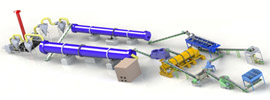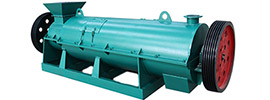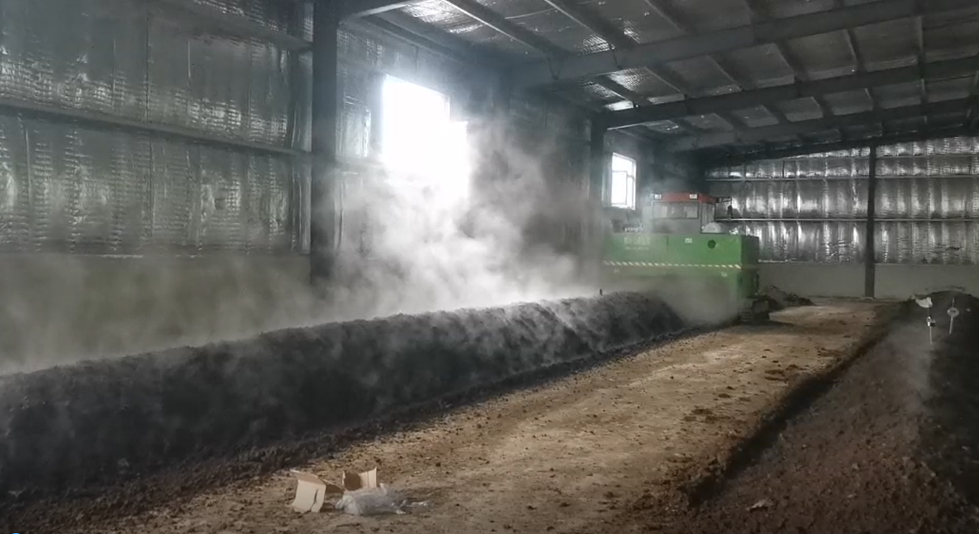The determination of successful organic fertilizer fermentation requires a comprehensive evaluation based on physical, chemical, and biological indicators, combined with operational details. Below are the specific criteria and operational recommendations:
I. Physical Indicators: Visual Assessment of Fermentation Status
- Color and Appearance
- Color: Successfully fermented organic fertilizer typically exhibits a dark brown or blackish-brown hue (e.g., chicken manure fermentation results in a grayish-black color, pigeon manure in a yellowish-green, but most raw materials ultimately yield a brown or blackish-brown product).
- Texture: It should be loose, free of clumps, and easily crumble when gently touched after being held in the hand. Straw and other raw materials become soft and brittle.
- Odor
- It should be odorless, with a faint ammonia smell or earthy fragrance, and may even have a slight aroma of alcohol or fermented sauce. If there is still an ammonia smell, putrid odor, or pungent sour smell, the fermentation is incomplete.
- Temperature
- The temperature of the pile stabilizes and aligns with the ambient temperature, showing no significant changes. During fermentation, the temperature initially rises and then decreases, eventually stabilizing within ±5°C of the ambient temperature. For instance, the pile temperature of well-fermented material drops below 40°C and does not rise further.
- Volume and Moisture Content
- The volume of the fermentation pile collapses by approximately one-third, and the moisture content decreases to below 30% (some sources mention below 40%, which may vary depending on the raw material). It should feel dry and non-sticky to the touch.
II. Chemical Indicators: Precise Evaluation of Fermentation Degree
- Organic Matter and Nutrient Content
- For example, chicken manure organic fertilizer requires an organic matter content of ≥45%, nitrogen, phosphorus, and potassium (NPK) content of ≥5%, and moisture ≤30%.
- Carbon-to-Nitrogen Ratio (C/N)
- After fermentation, the C/N ratio decreases from 25-35:1 to below 20:1, indicating sufficient organic matter decomposition and stable nitrogen mineralization.
- Water-Soluble Organic Carbon to Nitrogen Ratio
- Stabilization of this ratio at 5-6 indicates mature fermentation and adequate humification of organic matter.
III. Biological Indicators: Verification of Safety and Activity
- Germination Test
- Soak seeds in the leachate of the fermented material. A germination rate >85% indicates complete composting, showing no residual phytotoxic substances.
- Microbial Activity
- The appearance of abundant beneficial microbial hyphae (not mold) on the pile surface indicates good biological activity and thorough composting.
IV. Operational Details and Common Problem Solutions
- Fermentation Time
- Affected by raw materials, temperature, and turning frequency. For example:
- Livestock manure requires 20-30 days, while sawdust requires 40-60 days.
- 20-30 days in summer and 60-90 days in winter.
- Acceleration Tips: Adjust the C/N ratio (ideal 25:1), shred raw materials (e.g., cut straw to 3-5 cm), and add microbial agents.
- Common Issues and Solutions
- Slow Temperature Rise: Adjust moisture (45-55%), supplement nitrogen sources (e.g., urea), increase pile size, or add easily degradable materials (e.g., corn straw).
- Excessive Pile Temperature: Turn the pile to increase aeration or reduce pile size.
- Odor: Turn the pile to enhance oxygenation, add straw to adjust the C/N ratio, or use microbial deodorizers.
- Flies and Maggots: Process raw materials promptly, cover the pile during turning, or apply deodorizing agents.
- Clumping: Improve mixing methods, shred raw materials, or extend fermentation time.
V. Summary and Recommendations
Determining successful organic fertilizer fermentation requires a combination of physical, chemical, and biological indicators. Physical indicators (e.g., color, odor, temperature) provide intuitive, easy-to-measure assessments for daily monitoring. Chemical indicators (e.g., C/N ratio, nutrient content) offer greater precision for quality control. Biological indicators (e.g., germination tests, hyphae) verify safety. Operational adjustments should be made based on raw materials and environmental conditions, with prompt resolution of common issues to ensure thorough fermentation and avoid the hazards of "raw fertilizer" to crops. For a quick assessment, refer to empirical timelines (e.g., 30 days in summer, 60 days in winter), but a comprehensive evaluation based on indicators is recommended for accuracy.
 Send us a Email
Send us a Email Wulong Industrial Cluster
Wulong Industrial Cluster Have any question?
Have any question?


















